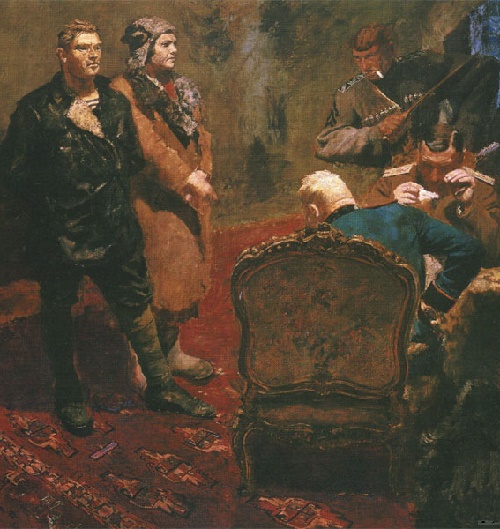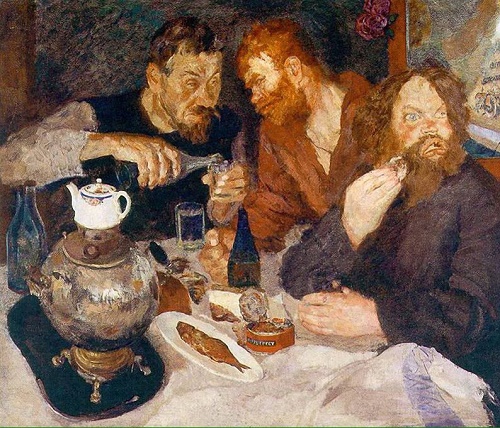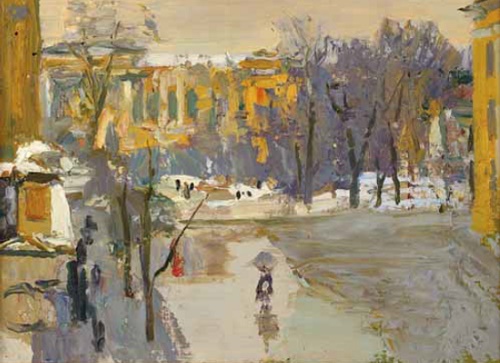Prominent Soviet artist Boris Ioganson 1893-1973
Prominent Soviet artist Boris Ioganson 1893-1973
In Soviet Art, pictures by Boris Vladimirovich Ioganson were considered exemplary, perfectly relevant to the principles of socialist realism. Boris Ioganson was a citizen-artist, artist-Communist, and advocate of the art of socialist realism. Hero of Socialist Labor, deputy of the Supreme Soviet of the USSR, twice winner of the State Prize of the USSR, People’s Artist of the USSR, academician. In 1958-1962 he was the President of the USSR Academy of Arts, in 1965-1968 – the first secretary of the USSR Union of Artists, and in addition, he found time to raise and teach our artistic youth.
“The people – the hero and the creator of history. To show deeds of our people – the honorable duty of artists, from whom the Soviet viewer expects paintings, raising the whole people’s topics, themes of great public sound.” Boris Ioganson

Collective work of artists B. Ioganson, V. Sokolov, D. Tegin (born 1914 N. Chebakov, and N. Faydysh Krandievskaya. Speech of Lenin at the III Congress of the Komsomol. 1950, oil on canvas
Ioganson studied in Moscow. First, in art studio of PI Kelin (1912), then in Moscow University of Painting, Sculpture and Architecture (1913-1918). At the beginning of the 1920s he has found his place in the group of artists who put the tradition of narrative painting of peredvizhniki into the service of propaganda of the new Soviet life. They called themselves AHRR – Association of Artists of Revolutionary Russia.
During these years, in painting of Ioganson dominates the story, much attention is paid to the details of the plot. He creates a panorama of buildings: “To fight against the devastation” (1922), “The construction of Zemo Avchal hydroelectric power station” (1925).
His paintings clearly indicate his likes and dislikes, new relations and orders: “Soviet Court” (1928). Besides, he looks for a new social type, as it is seen from the painting “Rabfak students (Students workers) are going (1928). The set of almost independent episodes fill the picture “Union Railway Station in 1919” (1928).
Prominent Soviet artist Boris Ioganson
In 1930-ies, without giving up the life of specific situations and field of painting, the artist seeks to create a kind of Soviet epic. He looks for images of “heroes” and “villains” of the new political myth and pushes them into dramatic situations. Significant themes appear in his major paintings: “Interrogation of Communists” (1933), “At the Old Ural Plant” (1937). The key is the last – in a psychological duel between the owner (for this figure posed artist AM Gerasimov) with “advanced” proletarian.
And in 1950, under his leadership, a group of artists has created a huge canvas “Speech of VI Lenin at the III Congress of the Komsomol” – a typical example of encouraged then the impersonal collective creativity.
In 1940-60-ies Ioganson gave a lot of time to teaching work, as he led the creative workshop of painting in the USSR Academy of Arts in Leningrad, then in Moscow. Since 1962 – President of the Academy of Arts.

Paper of Honor to the artist Boris Ioganson from All Russian Academy of arts for educating young generation. 1941
source
Illustrated book “Boris Ioganson” by O. Salko. Fine Art. Moscow. 1970



























